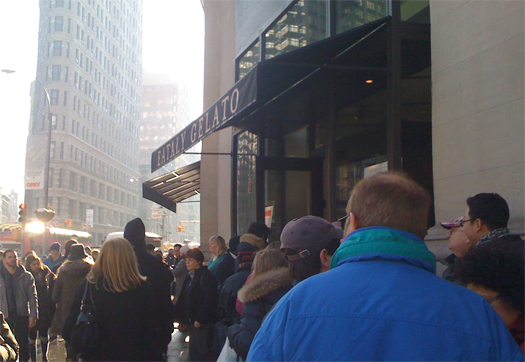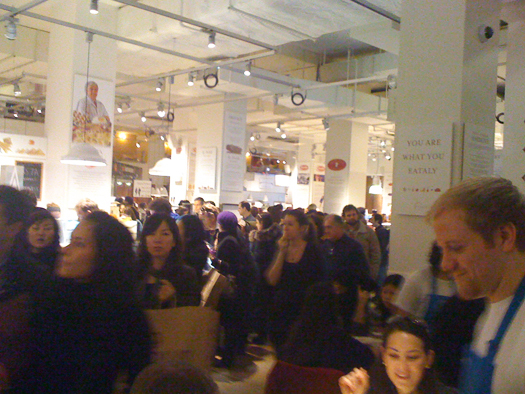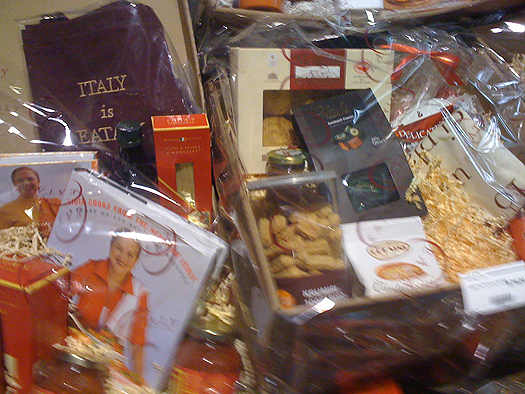
The line for gelato stretched around the block
The Slow Food movement was founded in the Langhe district of Piedmont, Italy, in 1986 and has spread throughout the world as an alternative to you-know-what. In Torino, Italy, it is manifest in Eataly, a food emporium and eatery on Via Nizza just across the street from a massive Fiat factory turned cultural center and hotel. From the outside, Eataly looks like a typical big box store, but inside it is a veritable small town of gastronomic wonder with individual cafes and lunch counters each serving specific kinds of food, including meat at one, fish at another, etc. There are also classes for slow food adherents. A New York version of Eataly, started by Mario Batali, Joe Bastianich and Lidia Matticchio Bastianich, opened in 2010 in the 36,500 foot lobby space of the old Toy Building on Fifth Avenue near the Flatiron Building, quickly becoming a magnet for epicures, gluttons and everyone in between. It is also as crowded and chaotic as Times Square, which dissappointingly subverts the intent of the original.

Sightseers and diners mingle in Eataly's 36,500 feet space
Slow food? While the products and produce are fabulous, Eataly New York is little more than an upscale fast food court. Of course, its better to eat healthy than the daily fare served at any of the industrial food chains, but there is a kind of unharmonic dissonance when good, slow food is comodofied on such a grotesque scale. And despite its spacial humungusness, people are sardined in the space, moving, milling and spilling. Why would anyone want to eat – slowly – in that environ?
Maybe it's just a New York thing. Eataly in Torino was not without its crowds (among them tourists, of which I was one), but one could always find a seat for a leisurely and delicious meal. New York is so jam-packed that the other day, people waiting around the block for gelato were only allowed entry ten at a time. Gelato in winter? Eataly in Torino is brimming with artisanal food stuffs and local products, while in New York it is bursting at the seams. And it seems, Eataly New York suffers, not from a lack of quality (it would be perfect if not for the throngs), but from a misguided sense and aesthetic of grandeur as large as Mr. Batali and Ms. Bastianich. Perhaps in order for Eataly New York to be sustainable, it must sustain too many people all at once.

Batali and Bastianich burst with booty
New York has always been known for its crowded and trendy culinary establishments. Food has long been more than mere sustenance — it is art, culture and entertainment — and let’s not forget, status too. Food as accessory. Once, people shopped at convienice stores (or stores that were convienient), now consumers will go far out of their way, not just for bargains to places like Trader Joe’s or Fairway, but for status foods with exotic packages and exclusive sustainable pedigrees.
Eataly in Torino offers much the same things, but in a modest, natural away. Italy may have fast food, but the speed limit is considerably more restrained. Eataly in New York knows few restraints. Rather than a soothing experience, stress appears on the menu. The minute one walks through the door, leisurely dining is rare. Contemplative time at the fish, meat or pasta counter is impossible. Speed is the essence of the Eataly experience — Eatfastaly — because the speedier the traffic flow, the more people can be allowed in ten at a time, and get to the bigger, fatter, faster feast.
